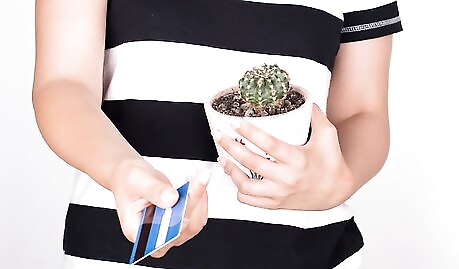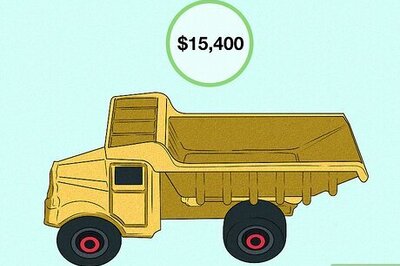
views

Buy saguaro cactus seeds from a seed distributor. Saguaro cacti reproduce through seeds, which can be harvested from the plant's red fruit. One saguaro can produce as many as 40 million seeds over the course of 175 years. Several online seed distributors sell saguaro cactus seeds, which are tiny black seeds about the size of a pinhead. Choose saguaro cactus seeds as an inexpensive way to grow the plant. The seeds are typically available in packs of 20 for $2 to $5. Be prepared for slow growth. The saguaro seeds will germinate in 3 to 10 days. However, the cactus grows only about 1.5 inch (3.8 cm) in 10 years. If you choose to plant a saguaro cactus from seeds, be prepared to wait decades to see the plant grow. Consider desert dome kits. Several seed distributors sell saguaro desert dome kits, which include the seeds, preferred soil, planting instructions and an incubator dome. The dome protects the cactus during its germination and provides the ideal growing conditions for the saguaro.

Purchase saguaro cactus plants from a garden center. Young saguaros, which typically range from 10 to 20 inches (25.4 to 50.8 cm), are available through Arizona-based garden centers and online distributors. Choose young saguaro cactus plants as a moderately priced option. A 15-inch (38.1 cm) saguaro cactus usually costs about $50. Select a healthy saguaro cactus. If buying the cactus in person, examine the plant. Make sure the cactus doesn't have signs of bruising, damaged spines or uneven growth. The soil should be gritty and well-drained. The plant should not have any visible signs of scaling from common cactus pests like mealy bugs. Be prepared to transplant the saguaro cactus to another container or into the ground within a few weeks. Saguaro roots typically are about 4 to 6 inches (10.1 to 15.2 cm) deep and spread out underground in a distance equivalent to the height of the plant. The main root of the plant is about 2 feet (0.6 m) long (.6 m) and extends directly below the plant into the soil. If the cactus is not transplanted, the container will inhibit the plant's growth. Select a protected location to plant the saguaro cactus. Young saguaros grow best under a "nurse tree," which is a larger tree that protects the cactus from harsh sun rays and helps provide moisture. Once the saguaro cactus grows to a mature size, the nurse tree usually dies because the 2 plants are competing for sun and water.

Buy a rescued saguaro cactus. Cactus rescuers preserve hundreds of saguaro cactus plants that are threatened due to development. Rescued cacti usually are sold at local plant sales in Arizona. Depending on the size, the plants typically are sold for $5 to $500. Often the proceeds benefit public cactus gardens or school botanical programs.

Buy transported saguaro cactus plants from approved suppliers. To purchase a large, mature saguaro cactus, consider having a cactus transported to you. Because saguaros can grow up to 50 feet (15.2 m) tall and weigh more than 4,000 pounds (1,814.4 kg), relocating the plant requires the work of a professional and trained team of cactus brokers and transporters. Plan to spend between $500 to $2,500 for a large saguaro cactus. Enlist the services of a cactus broker approved by the state of Arizona. There are stringent laws governing the sale and transporting of saguaro cacti. Make sure your cactus broker is compliant with the Arizona Department of Agriculture. Ensure the team transporting your saguaro cactus has the proper equipment. A saguaro more than 4 feet (1.2 m) tall (1.2 m) requires the work of several strong people to transport it. A saguaro more than 6 feet (1.8 m) tall (1.8 m) requires the use of hydraulic equipment to transport it. Hire experienced transporters. Moving such a large plant can result in injury to the transporters and to the cactus. Any damage the saguaro experiences during relocation, such as skin tears or cracks, will decrease the chance of survival in its new environment. Mark the south-facing base of the plant. In order to thrive in a new location, the cactus should be transplanted with the same orientation.

















Comments
0 comment